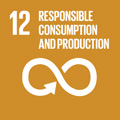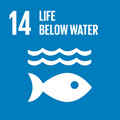- Docente: Luciana Mandrioli
- Credits: 3
- SSD: VET/03
- Language: English
- Teaching Mode: In-person learning (entirely or partially)
- Campus: Bologna
- Corso: Second cycle degree programme (LM) in Food Animal Metabolism and Management in the Circular Economy (cod. 5814)
Learning outcomes
At the end of the module, students: 1. can explain the relationships between stress, inflammation and immune response; 2. know the main hepatic and gastrointestinal pathologies that can interfere with metabolic efficiency; 3. can correlate humoral parameters for estimating metabolic efficiency with physiological or pathological processes.
Course contents
Mention the main morpho-functional elements of endocrine glands, immune system, liver and gastro-intestinal apparatus that regulate the animal metabolism.
Mechanisms at the cellular level (endoplasmic reticulum stress, protein misfolding) indicative of metabolic stress.
How inflammation and its actors (immunoglobulins, lisozyme, complement, respirator burst activity) can vary under the effect of the environmental -internal and external- stimuli.
Association of humoral parameter expression of metabolic efficiency with physiologic or paraphysiologic phenomena.
Relationship between soluble molecules (mucins, lisozyme) and nutrients.
Cell adaptations after reversibile and irreversible injury.
How technopaties can interfere with metabolism of the reared animals.
Literature-based selection of humoral parameters (immunologic, flogistic and mucus-related substances) correlated with an optimal or a sub-optimal animal health status.
Readings/Bibliography
REFERENCES
Pdf papers from journals of veterinary science.
TEXTBOOK
Tyzard I. Veterinary Immunology. 10th ed. ISBN9780323523493, Saunders, 2019
Teaching methods
Frontal lessons highly interactive. Participants at the end of each lesson are invited to answer to a few questions (Forms©) as a self-evaluation test, to set the initial level and the improvements.
Students will work online and in presence in small groups, in order to prepare and make a presentation about one soluble mediator/molecule of interest for animal metabolism and critically comment a review about it.
These activities will be taken in consideration and will contribute to the final score.
Assessment methods
EVALUATION
The final score will be the sum of the results obtained as follows:
90% score obtained from a written test, composed by 2 open questions and 40 closed-ended questions (10 anatomy, 10 pathology, 20 physiology)). It will run at the end of the second part of the course.
10% evaluation of the lively participation to the practical/laboratory in itinere activities and/or individual tasks assigned.
The cut-off to consider the exam passed is a score equal or superior to 24/40 in the open and closed-ended questions.
Score grid:
Final scoring will be the result between the weighted average of the score from the test and the score of practical/in itinere activities:
scoring open questions: minimum 24/40 (grade 18)-max 39-40 (grade 30);
scoring Q&A questions: min 24/40 (grade 18)-max 39-40 (grade 30).
Evaluation grid:
Scoring open questions: minimum 24/40. To each score from 24 to 32 corresponds the mark from 18 to 26; score 33-34 mark 27; score 35-36 mark 28; score 37-38 mark 29; score 39-40 mark 30.
Scoring closed-ended questions: minimum 24/40. To each score from 24 to 32 corresponds the mark from 18 to 26; score 33-34 mark 27; score 35-36 mark 28; score 37-38 mark 29; score 39-40 mark 30.
Scoring for evaluate laboratory/practical activities or independent work carried out by the student:
Very deep knowledge of the topics discussed during the course, along with excellent skills to perform critical analysis, make appropriate links among the various disciplines and an excellent command of specific terminology (score 30-30 full marks).
Deep knowledge of the topics discussed during the course, along with good skills to perform critical analysis, make appropriate links among the various disciplines and a good command on specific terminology (score 27-29).
Adequate knowledge of the topics discussed during the course, along with sufficient skills to perform critical analysis, make appropriate links among the various disciplines even though not particularly elaborated, but expressed in an appropriate scientific language (score 23-26).
Knowledge and analytical skills sufficient, expressed in a barely formally correct scientific language (score 18-22).
Final score will be obtained as follows:
[(test-written scoring *90)+(in itinere scoring*10)]/100
Teaching tools
powerpoint slides
Moodle platform
Questionnaries (Forms)
Videos
pdf papers from journals
Office hours
See the website of Luciana Mandrioli
SDGs




This teaching activity contributes to the achievement of the Sustainable Development Goals of the UN 2030 Agenda.
